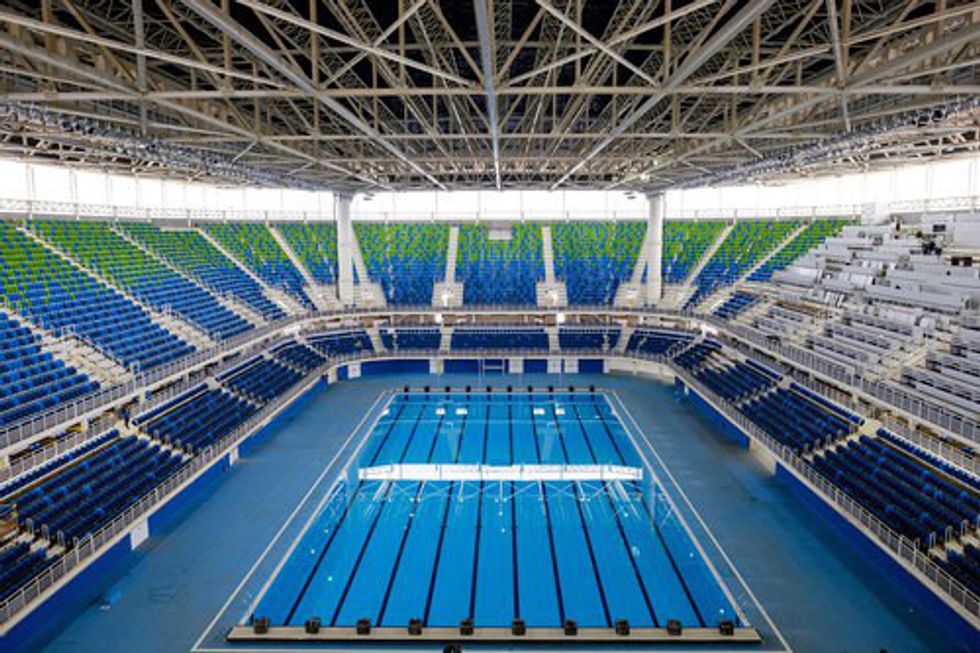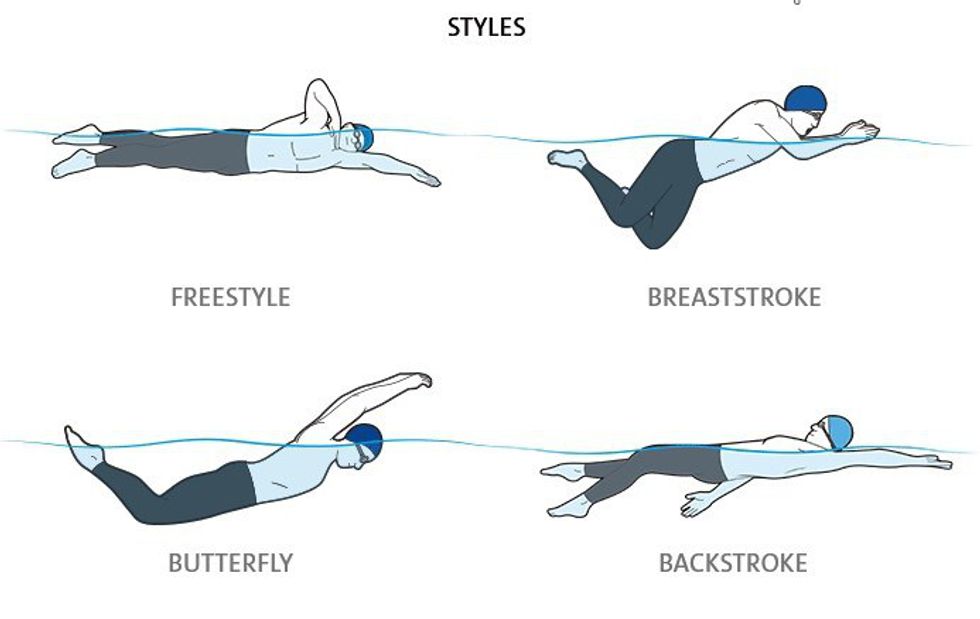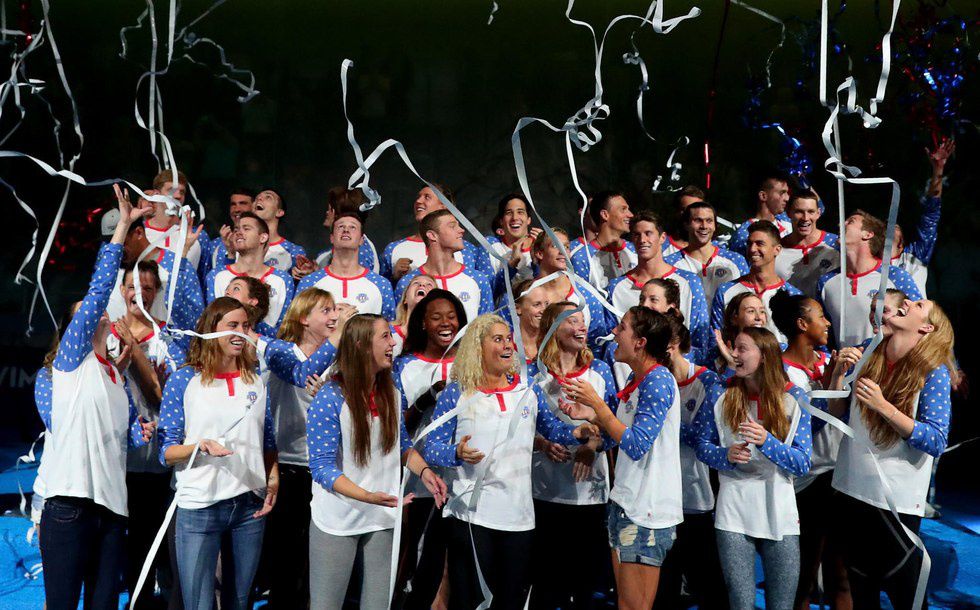Once every four years, swimming seems to become the greatest sport on this Earth. Everyone is talking flip turns and times, but do you really understand what is going on? Unless you’re on a swim team or an avid supporter, in most cases you just enjoy cheering and looking at Michael Phelps along with the rest of the country. Here’s your quick go-to guide so you can not only cheer the U.S. to victory but actually know what you’re cheering for!
The pool
This is not your high school pool. The pool in Rio is 50 meters wide, 25 meters long and 3 meters deep. The water temperature varies from 25 degrees Celsius to 28 degrees Celsius. At Rio, events (different kinds of races) will range in distance from 50M to 1500M. The pool is divided into eight competition lanes, each 2.5 meters wide. Most events begin from starting blocks, the exception being backstroke, in which swimmers start from inside the pool. And no, don’t think they’re about to start building with these blocks; they are the starting platforms located behind each lane.
Events
In addition to individual events for each of the four swimming styles, there are relay events contested by teams of four swimmers, along with medley events (individual and relay) which combine all four styles in a single race. Competitions are divided into qualifications, qualifiers semi-finals (with the 16 best of the event) and finals (with the eight best of the semi-finals). The first couple days of the games, swim “heats” will be taking place. Yes, it is hot in Rio and the U.S. will be bringing plenty of heat. However, when I say heat I'm really referring to a division of an event when there are too many swimmers to compete at the same time. The results are compiled by the swimmers time, swam after all heats of the event are completed.
Strokes
Swimming has been in the Olympics since Athens 1896. It is now one of the disciplines that distribute most medals, with 32 events (16 for both male and female) in butterfly stroke, backstroke, breaststroke and freestyle. But what does that even mean? Is the “breaststroke” an X-rated event? Is freestyle just swimmers swimming however they want? Don’t the butterflies drown? *All swimmers are slowly drowning hearing these questions*
The following are specifically defined by the USA Swimming, the National Governing Body for the sport of swimming:
"Butterfly: Nicknamed 'fly,' the swimmer rotates both arms simultaneously and flexes the body up and down in a manner reminiscent of a dolphin; indeed, the leg movement is known as a ‘dolphin kick.’ This is swam as the third stroke in the Medley Relay and the first stroke in the I.M. Racing distances are 50 meters, 100 meters and 200 meters.
Backstroke: A pretty basic concept, it's basically any style of swimming on your back. Backstroke is swam as the first stroke in the Medley Relay and the second stroke in the I.M. Racing distances are 50 meters, 100 meters and 200 meters.
Breaststroke: A style of swimming on one's front in which the arms are pushed forward and then swept back in a circular movement, while the legs are tucked in toward the body and then kicked out in a corresponding movement. This is a slower swimming style in which an athlete’s movements are similar to those of a frog. Breaststroke is swam as the second stroke in the Medley Relay and the third stroke in the I.M. Racing distances are 50 meters, 100 meters and 200 meters.
Freestyle: In freestyle events, swimmers can use any stroke they wish, but in practice, they all opt for the crawl which is the fastest style. Nicknamed 'free,' it is swam as the fourth stroke in the Medley Relay and the fourth stroke in the I.M. Racing distances are 50 meters, 100 meters, 200 meters, 400 meters, 800 meters and 1500 meters."
The U.S. domination
Now this is something you already know. The U.S. IS A BEAST AT SWIMMING! Nobody has taken the podium as many times as Michael Phelps: from Athens 2004 to London 2012, the athlete had nothing less than 22 medals around his neck. He also holds the gold (currently 18) and victory records in the same edition of the Olympic Games (8), at Beijing 2008. But don't think Phelps will be carrying the flag AND team. The U.S. roster is stacked with America's best athletes like Missy Franklin, Ryan Lochte and Katie Ledecky to name just a few.
Whether you're a swimmer or just an American falling in love with the sport, you know you can take pride in the United States Olympic team!
U-S-A!!






















